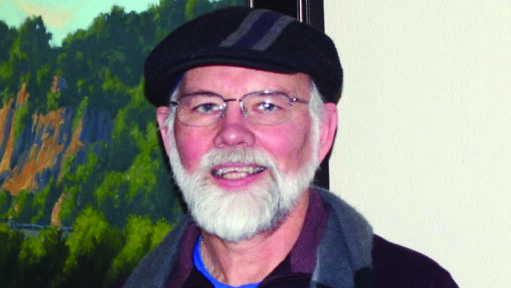Building Community
By Tim Johnson
Our children were asleep, or so I thought, when I asked my wife if she had finished hiding the Easter eggs. Unfortunately, my five-year-old son was awake and overheard the question. He quickly determined that if mom was hiding the Easter eggs, then what we’d taught him about the Easter bunny doing that job wasn’t true. He proceeded, in short order, to debunk the tooth fairy and then Santa Claus. Like dominoes toppling one after the other, they all fell to the true or false clarity of a child’s perspective. As a Christian minister, I was glad that Jesus, about whom we tell some rather amazing stories, seemed to be still standing unscathed.
We live in a time when what is true has been very much in question—and it likely will remain this way for the foreseeable future. We have lived under a president who for the past four years has branded any truth that does not fit with the world as he wishes it to be as “fake news,” including the results of the November election. But the issue of what is true and what is false goes well beyond any assertion of a one-term president who treats truth like potter’s clay.
Many of us are relieved that we will soon have a president who values science as a place in which truth can be grounded. We understand that, despite the complexity of the world, scientists willing to reserve judgment and accept unwelcome truths have helped us understand the importance of masks and social distancing in the fight against COVID-19. These scientists have created a vaccine that will hopefully make it possible for us to be once again in close proximity with family, friends and neighbors without fear of catching or spreading a deadly disease. Other scientists alert us to the extreme danger of climate change and, we hope, will help us mitigate some of its worst effects.
Yet science also can come up short if seen as the sole arbiter of truth. Author Wendell Berry, in his book of essays, Our Only World, is quick to point out that analytical science commonly locates its truth in evermore focused specializations. When our son applied to schools of engineering, I was astounded to learn how many types of engineering existed from which he would ultimately need to choose. The truth of science is distilled in more detailed refinement of smaller and smaller parts.
Where the truth in science comes up short is in its capacity to see the whole, which is more than the material existence of, say, a plant or a human being, but also the relationships that exist among them. As Berry notes, “we may know the anatomy of the body to the extent of the anatomy of the atoms, and yet we love and instruct our children as whole persons.”
Truth is built on more than specialized observation. Truth also requires relationship. The very notion of “fake news” is built and reinforced on the fracturing of relationship, a state in which truth is filtered only through the lens of conflicting ideologies. It was this brokenness of relationship that made it possible for German doctors to experiment on Jewish prisoners, scientists in the U.S. to conduct the Tuskegee syphilis study on African American men or Line 3 advocates in Minnesota to ignore the treaty rights of Native Tribes.
Truth requires seeing the whole as well as the parts. Truth is found in anecdote as well as in data. It may be some time before we are able to discover a shared sense of truth on which we might all rely. But, if truth is to be found, it will only happen in the context of relationships that are strengthened and nurtured. This, of course, puts a special responsibility on those of us who are accustomed to having our stories heard.
There was and is truth in the Easter bunny, the tooth fairy and Santa Claus, but for our children that truth was firmly planted in our love and relationship. It is a connection which is much stronger than the biological truth found in our DNA. When the Easter bunny was no longer needed, the truth of our bond remained.
Tim Johnson is a retired pastor of the United Church of Christ.








Leave a Reply to Bill Finnerty Cancel reply